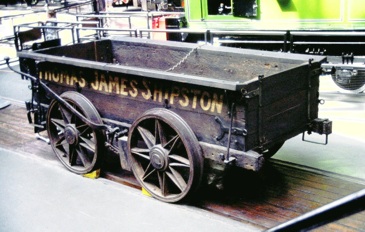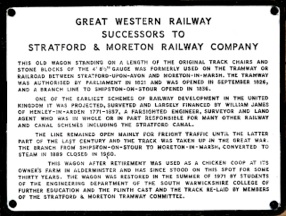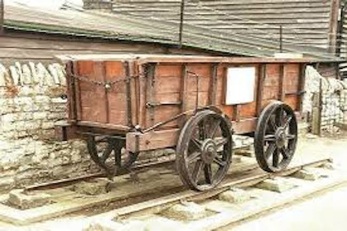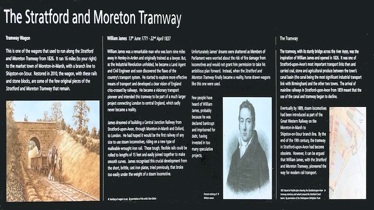SLHS Tramway North




Disclaimer
Whilst some care has been taken to check externally linked websites no responsibility is offered nor implied for the suitability, legality or reliability of content therein.
Statements are made here to the best of our knowledge. However no statement here should be regarded as irrefutable fact. Please contact us if you consider otherwise.
Further Information..
-
Brief tramway history: Our Warwickshire
A full treatise on the tramway’s history: Warwickshire Railways-GWR
Walking the current remains: Firkling Blog1992: David & Nigel Shaw: StratfordTramway
SLHS Picture & Document Archives..
-
Picture Vaults: Coming soon..
Stratford to Moreton-in-Marsh - North Of Shipston
Last update: 31/10/2024
● These items have aspects that uniquely contribute to national or world history.
Main Commercial Centre
The head was in Stratford where William’s canal met the River Avon and a significant number of wharves were built around one then later a second basin (See plenty of pictures Stratford Basins ). By far the greatest amount of trade was in William’s Staffordshire coal.
In this northern section were functioning wharves* at: Alderminster, Ilmington, Newbold.
Restored wagon in Stratford 1972. Thomas Hutchings operated lime kilns in Newbold. (Click for a later picture)
An original wagon c1840 in the National Railway Museum, York
(Click for larger picture)
The original plaque on the side of the wagon
(Click for a larger picture)
The current plaque in Stratford
(Click for larger version)
Wagons Arrive In Stratford Nigel Shaw 1992

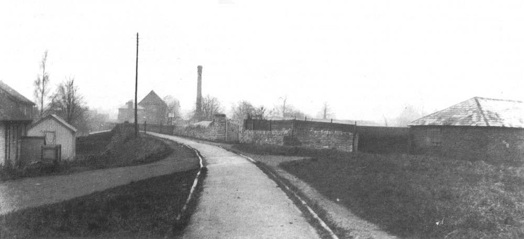
The southern end of the tramway bridge looking north after the tracks had been removed for the Great War 1930
(This needs to be replaced)
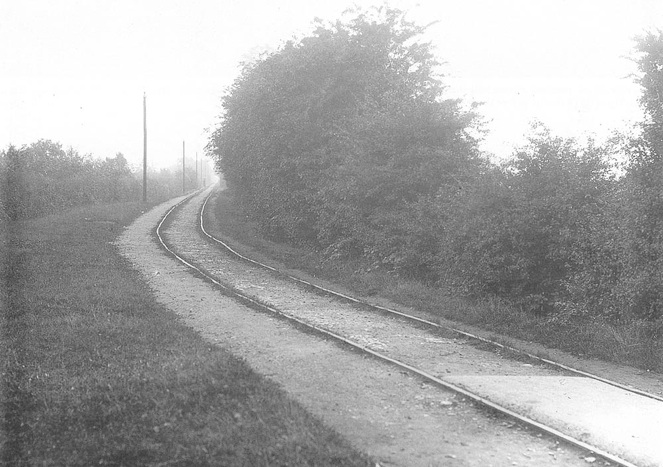
A wagon preserved at the end of the tramway in Stratford 1938
Once used as a chicken coop in Ilmington
(Click picture for a magazine article on it)
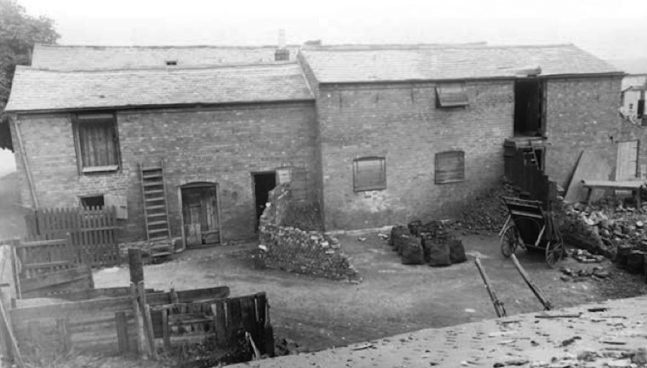
Transfer Coal Yard -from canal to tramway 1930
*Wharf is William James’ canal speak for tram stop or depot.
Intermediate Stations
It is assumed that being single track that there must have been passing loops every so often. Certainly this would have been the case at one or two of the functioning wharves* along the way which were at: Alderminster, Ilmington, Newbold, Stretton-on-Fosse and later Shipston.
Let’s now look at the known traders in the northerly section (probably more to add to this list)
Proceed now to next page: Tramway South

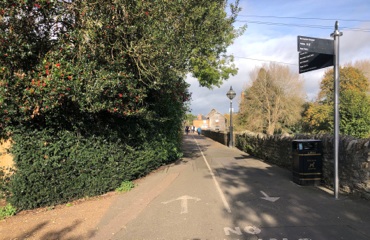
Then And Now..
The tramway as it starts its journey south climbing up from the bridge over the River Avon. c1900
Obviously foliage has grown so significantly that it’s impossible to take a picture from exactly the same position as the previous photo. Oct 2023
By the Butterfly Farm there are mature trees along the whole route. October 2023
GWR Commemorative Wagon
After formal closure of the tramway the Great Western Railway presented a refurbished remnant truck to the town in 1938 to celebrate the pioneering spirit that had lead to Stratford’s great fortune during the tramway’s years.
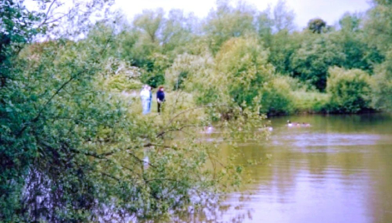
Newbold Quarry - now a pond. DShaw 1992
Newbold: Thomas Hutchings
There was a quarry just outside Newbold where raw limestone was near the surface. Its contents must have been used in agriculture. The quarry is now on private land, completely flooded and called Newbold Pond.
My conjecture is that Thomas Hutchings family probably operated modest lime kilns there producing lime for mortar and limewash for local use. Around the area were many artifacts indicating its use. However nearly all have now been stolen and the then owner, Bob Mole, was upset at this (see last paragraph in blog below).
Once the tramway arrived it could take Hutchings’ products to a much wider market both north and south. Stratford had a lot of the right sort of clay for brick making and once the canal was completed, and William James coal plentiful, Stratford’s Espley’s Brickworks became viable. Indeed it became quite huge. Bricks and mortar are a divine partnership for a growing industrial economy so Hutchings must have been rather pleased.
As yet I have no evidence to prove that Thomas Hutchings was related to the Hutchings Coal & Iron Merchants at Bridgefoot Stratford but I’d be staggered if they weren’t. Nor for that matter related to David Hutchings who restored the Stratford Canal and Upper Avon River.

To return to Master page click on ‘Tramway’ above.
-
● Full
-
● Partial
-
● None
-
Theatres ●

